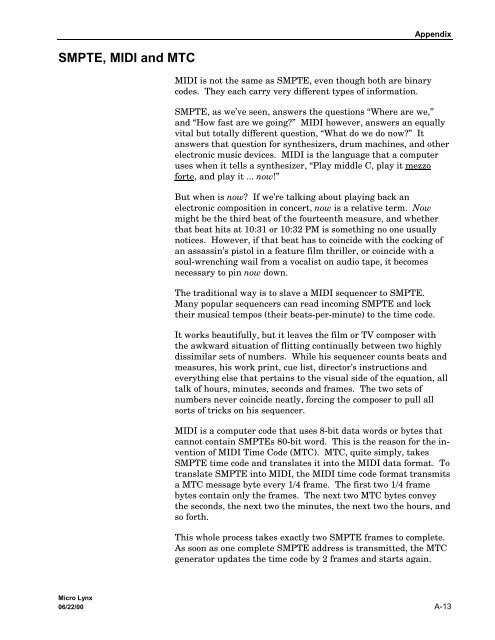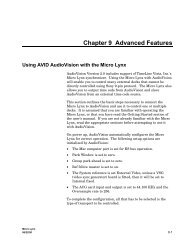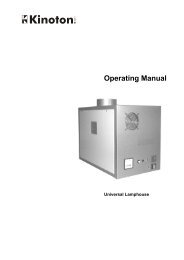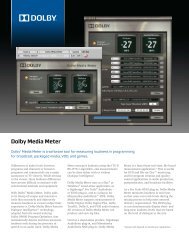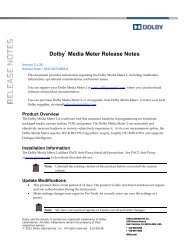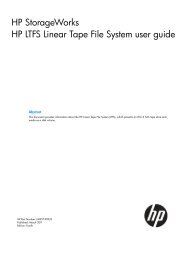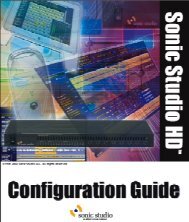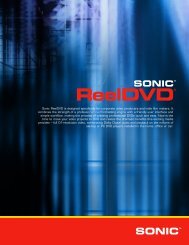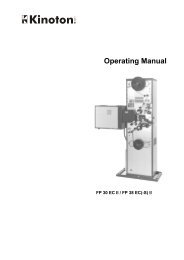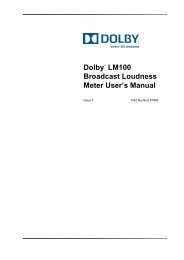Cable Reference Guide - Audio Intervisual Design, Inc.
Cable Reference Guide - Audio Intervisual Design, Inc.
Cable Reference Guide - Audio Intervisual Design, Inc.
- No tags were found...
You also want an ePaper? Increase the reach of your titles
YUMPU automatically turns print PDFs into web optimized ePapers that Google loves.
AppendixSMPTE, MIDI and MTCMIDI is not the same as SMPTE, even though both are binarycodes. They each carry very different types of information.SMPTE, as we’ve seen, answers the questions “Where are we,”and “How fast are we going?” MIDI however, answers an equallyvital but totally different question, “What do we do now?” Itanswers that question for synthesizers, drum machines, and otherelectronic music devices. MIDI is the language that a computeruses when it tells a synthesizer, “Play middle C, play it mezzoforte, and play it ... now!”But when is now? If we’re talking about playing back anelectronic composition in concert, now is a relative term. Nowmight be the third beat of the fourteenth measure, and whetherthat beat hits at 10:31 or 10:32 PM is something no one usuallynotices. However, if that beat has to coincide with the cocking ofan assassin’s pistol in a feature film thriller, or coincide with asoul-wrenching wail from a vocalist on audio tape, it becomesnecessary to pin now down.The traditional way is to slave a MIDI sequencer to SMPTE.Many popular sequencers can read incoming SMPTE and locktheir musical tempos (their beats-per-minute) to the time code.It works beautifully, but it leaves the film or TV composer withthe awkward situation of flitting continually between two highlydissimilar sets of numbers. While his sequencer counts beats andmeasures, his work print, cue list, director’s instructions andeverything else that pertains to the visual side of the equation, alltalk of hours, minutes, seconds and frames. The two sets ofnumbers never coincide neatly, forcing the composer to pull allsorts of tricks on his sequencer.MIDI is a computer code that uses 8-bit data words or bytes thatcannot contain SMPTEs 80-bit word. This is the reason for the inventionof MIDI Time Code (MTC). MTC, quite simply, takesSMPTE time code and translates it into the MIDI data format. Totranslate SMPTE into MIDI, the MIDI time code format transmitsa MTC message byte every 1/4 frame. The first two 1/4 framebytes contain only the frames. The next two MTC bytes conveythe seconds, the next two the minutes, the next two the hours, andso forth.This whole process takes exactly two SMPTE frames to complete.As soon as one complete SMPTE address is transmitted, the MTCgenerator updates the time code by 2 frames and starts again.Micro Lynx06/22/00 A-13


